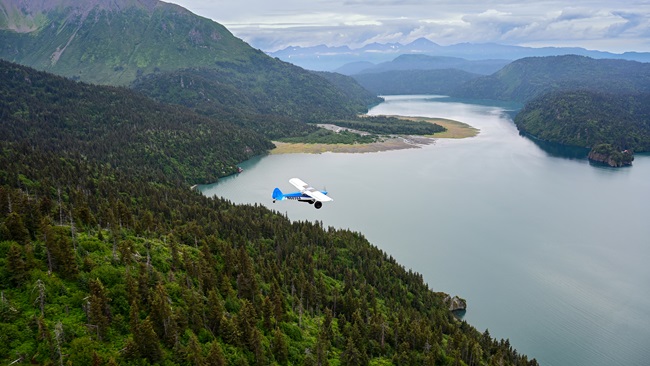Turning crosswind: When’s the right time?
By Benjamin Hostetler
Pilots flying at towered airports have likely heard a tower controller say, “I’ll call your crosswind.” But how about those times when it’s left up to the pilot to decide?

From student pilots to those pursuing commercial certificates and beyond, the timing of the turn to crosswind is a gray area that leaves many aviators guessing each lap in the pattern.
The correct answer hinges on a few factors. The number of airplanes in the pattern, runway length, and aircraft performance are just a few examples. Knowing how all of these factors affect low-altitude turns not only makes a pilot’s skills sharper, but creates a safer environment for others operating nearby.
Section 4-3-3 of the Aeronautical Information Manual breaks down how the standard traffic pattern should look. A detailed diagram of the pattern is also included so that pilots can gain a better understanding of recommended procedures. While specifics about individual legs are listed, little is mentioned about the transitions between them.
Only one line in this section of the AIM talks about the first turn a pilot is expected to make: “If remaining in the traffic pattern, commence turn to crosswind leg beyond the departure end of the runway within 300 feet of pattern altitude.”
These guidelines seem straightforward, but let’s say you’re flying during the winter in a Piper Seminole at Denver’s Centennial Airport (APA), where the longest runway is 10,000 feet. It won’t take your multiengine aircraft that whole distance to reach pattern altitude, so can you turn crosswind before the end of the runway?
While it may seem illogical and inefficient to continue down to the departure end of the runway once pattern altitude is reached, it’s what’s expected. The good news is that if a tower controller sees you’re the only one in the pattern, he or she might give you permission to turn an early crosswind.
The AIM guidance is a good start, but other aircraft in the pattern mean additional considerations. For most situations, a good rule of thumb is to wait until the aircraft directly in front of you in the pattern has passed your aircraft’s wing going the opposite direction before starting your turn to crosswind.
This rule is especially useful at airports where traffic congestion is an issue. A tower controller might extend the upwind leg of the aircraft in front of you, or “call their crosswind.” Once that aircraft is given clearance to turn, the tower controller has the option to tell you to follow the traffic passing off your wing. Turning too early to follow the traffic will extend your downwind leg as you give the aircraft ahead more space on final approach; and turning too late leads to inefficiency and a larger traffic pattern. Sound aeronautical decision making and use of this rule helps to keep things orderly and efficient. Your local tower controller will thank you.
Your aircraft’s performance also plays a role in the timing of your turn to crosswind. In higher-temperature training environments, like Arizona and Florida, any aircraft’s performance is going to be significantly reduced. Your departure leg may extend farther beyond the runway end before you reach 300 feet below traffic pattern altitude. Don’t feel pressured to turn just because traffic is departing directly behind you. Any aircraft operating on a hot day is probably experiencing poor performance and is going through the same thing as you.
A lot is left up to the pilot in command when operating in the traffic pattern. While the AIM and your instructor can give you guidance, experience is the best teacher when fine tuning the timing of the turn to crosswind.
Keep these things in mind the next time you’re about to start that first turn in the pattern. You’ll not only be a safer pilot, but a more efficient one as well.


